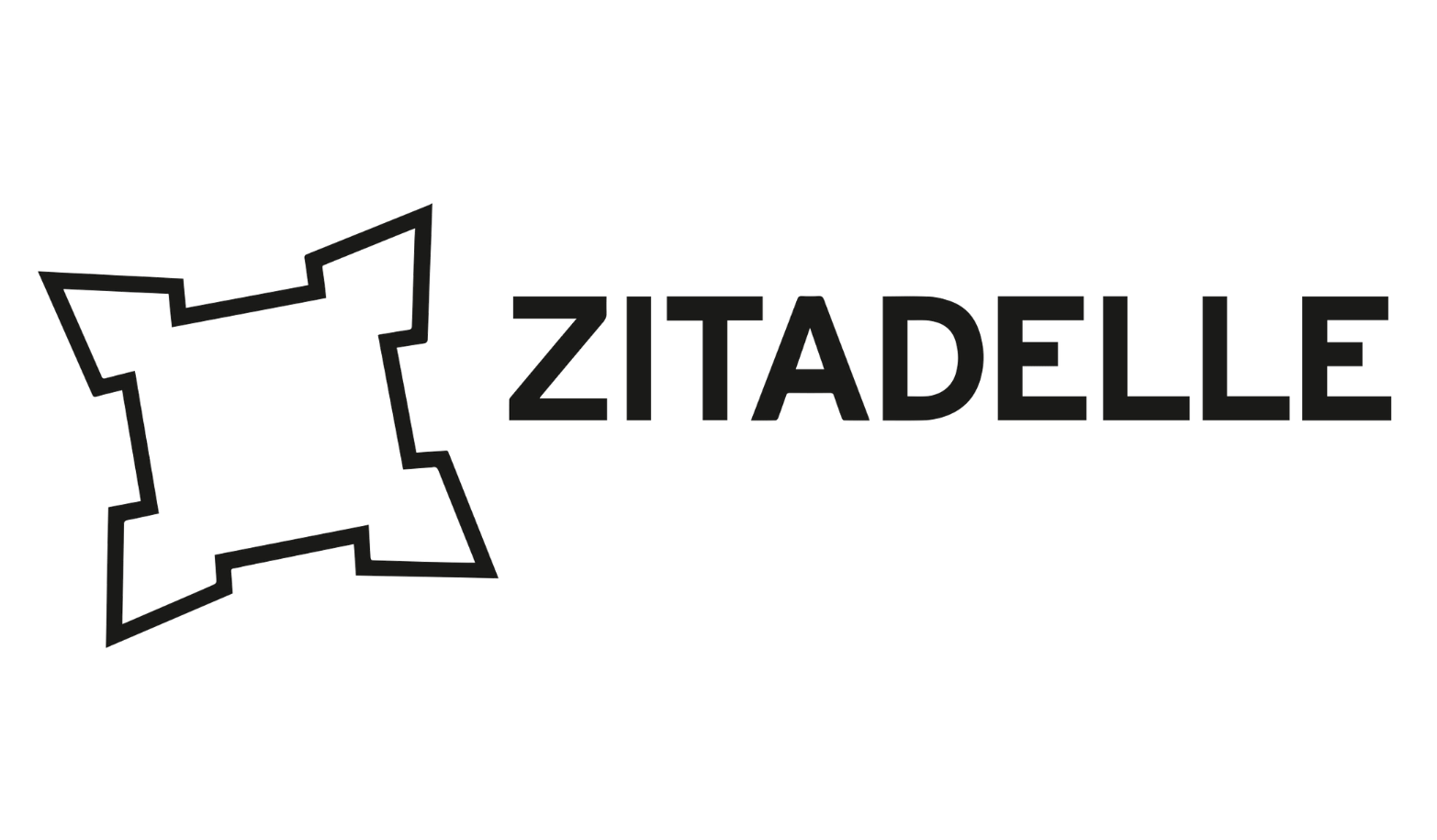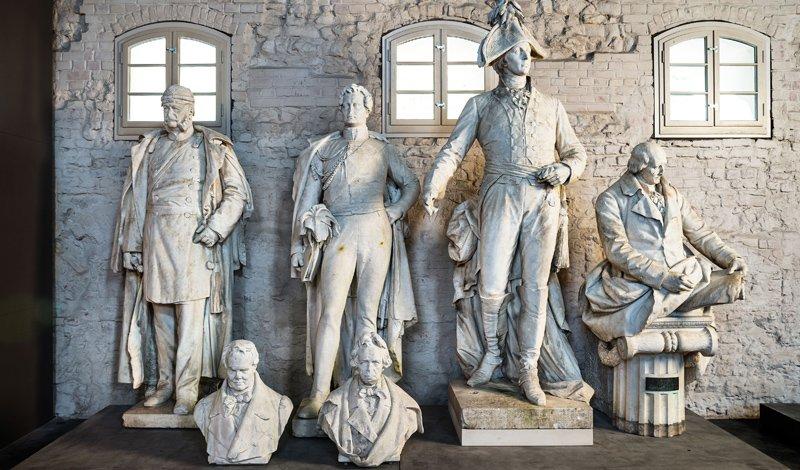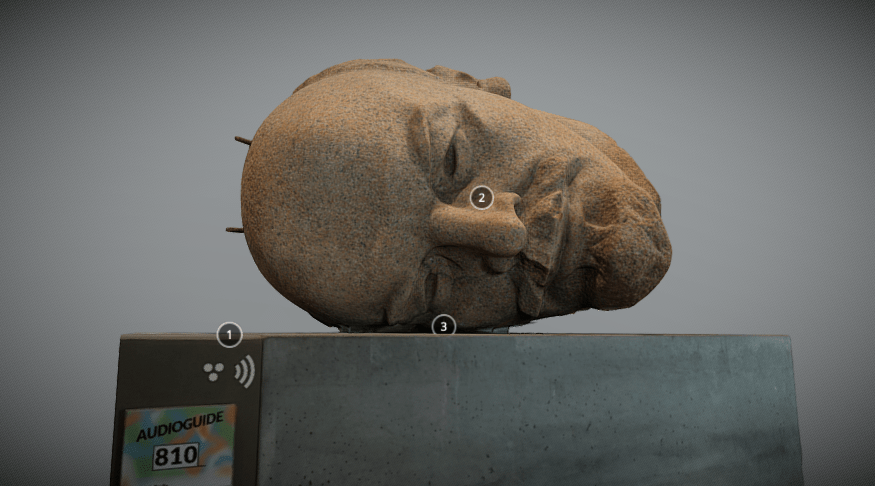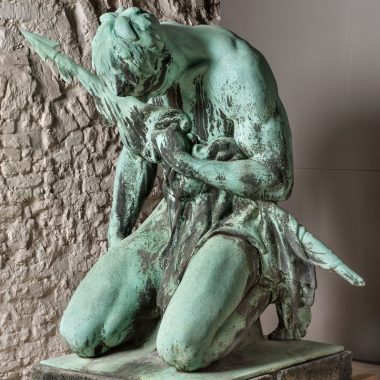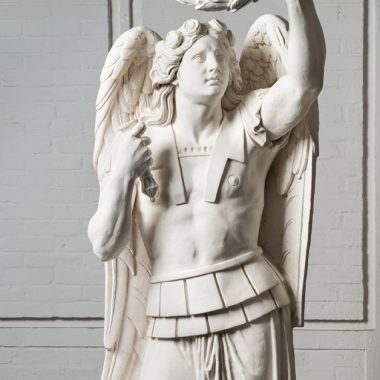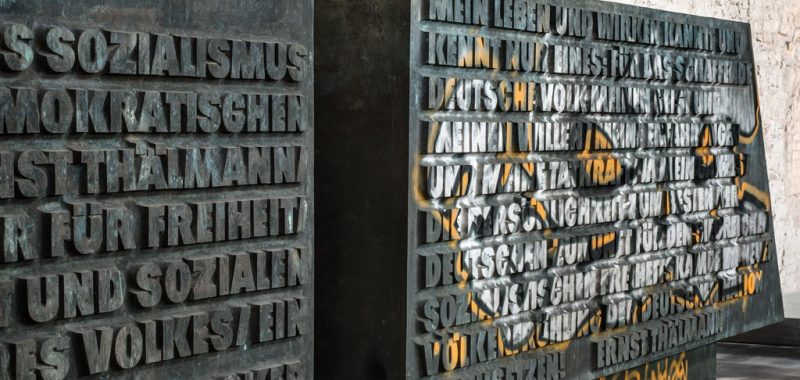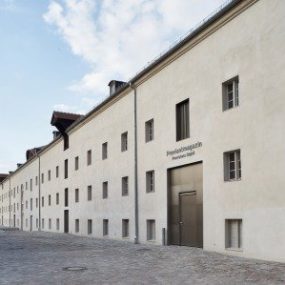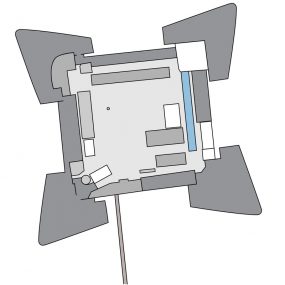The cultural-historical permanent exhibition in the Proviant Magazine displaysmonuments from 1849 to 1986, with which the respective state powers wanted to shape the Berlin cityscape. Due to the political upheavals in the 20th century, monuments that represented problematic or even threatening reminders or appreciation of the old ways were removed from public spaces by the new goverments. The museum offers an opportunity to come to terms with the great symbols of the German Empire, the Weimar Republic, National Socialism and the GDR, which were supposed to be buried and forgotten – and now serve a new function as
testimonies to German history. Instead of commanding reverence, they make historical events tangible in the truest sense of the word. Because though usually not allowed in a museum: here, touching is permitted in most cases.
Among the most important exhibits are the monument ensemble of the Siegesallee with its Brandenburg-Prussian rulers, erected between 1898 and 1901, the National Socialist-influenced “Decathlete” by Arno Breker, and the head of the monumental Lenin Monument, unveiled in 1970 at today’s Platz der Vereinten Nationen (United Nations Square) in Friedrichshain.
